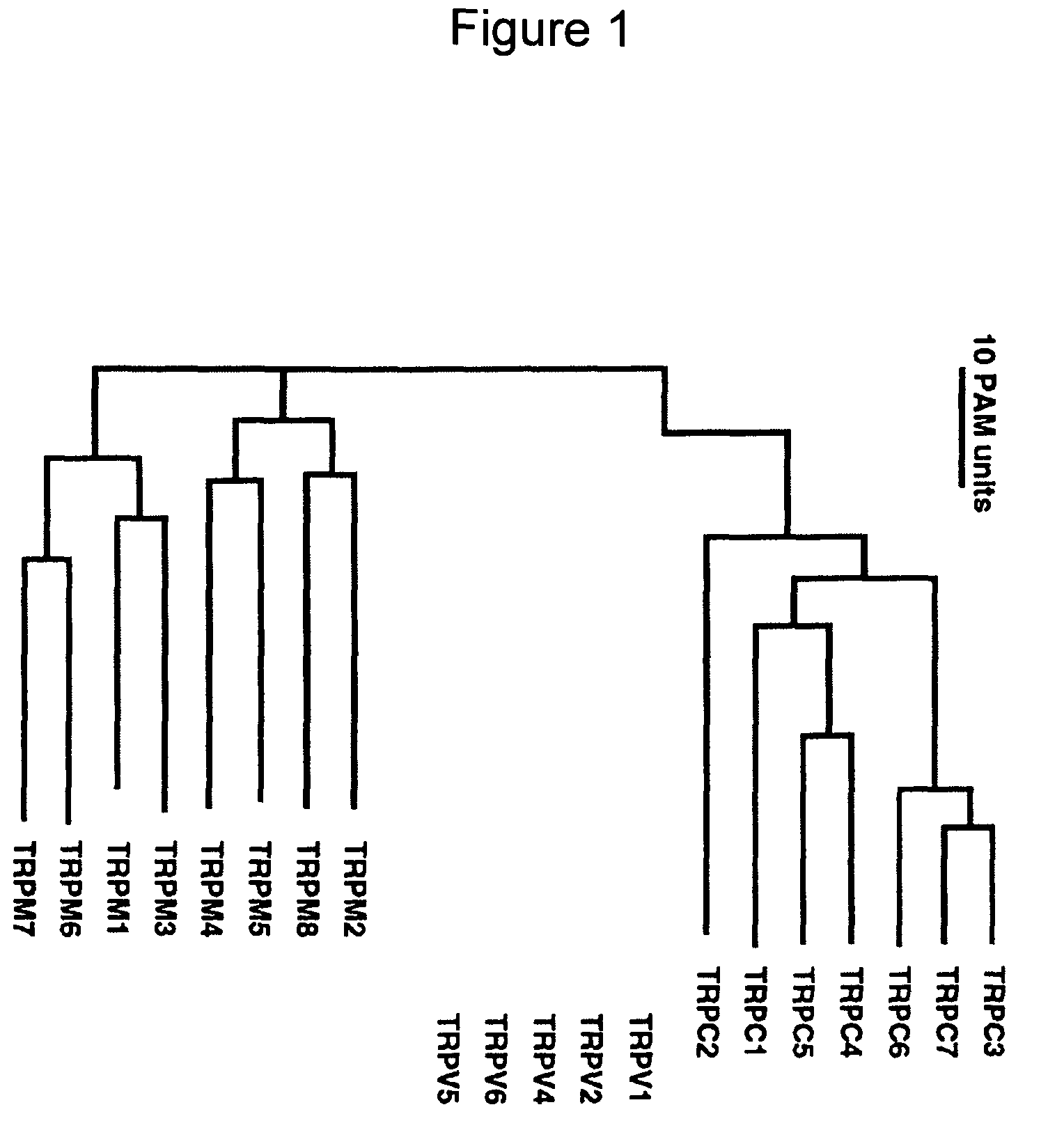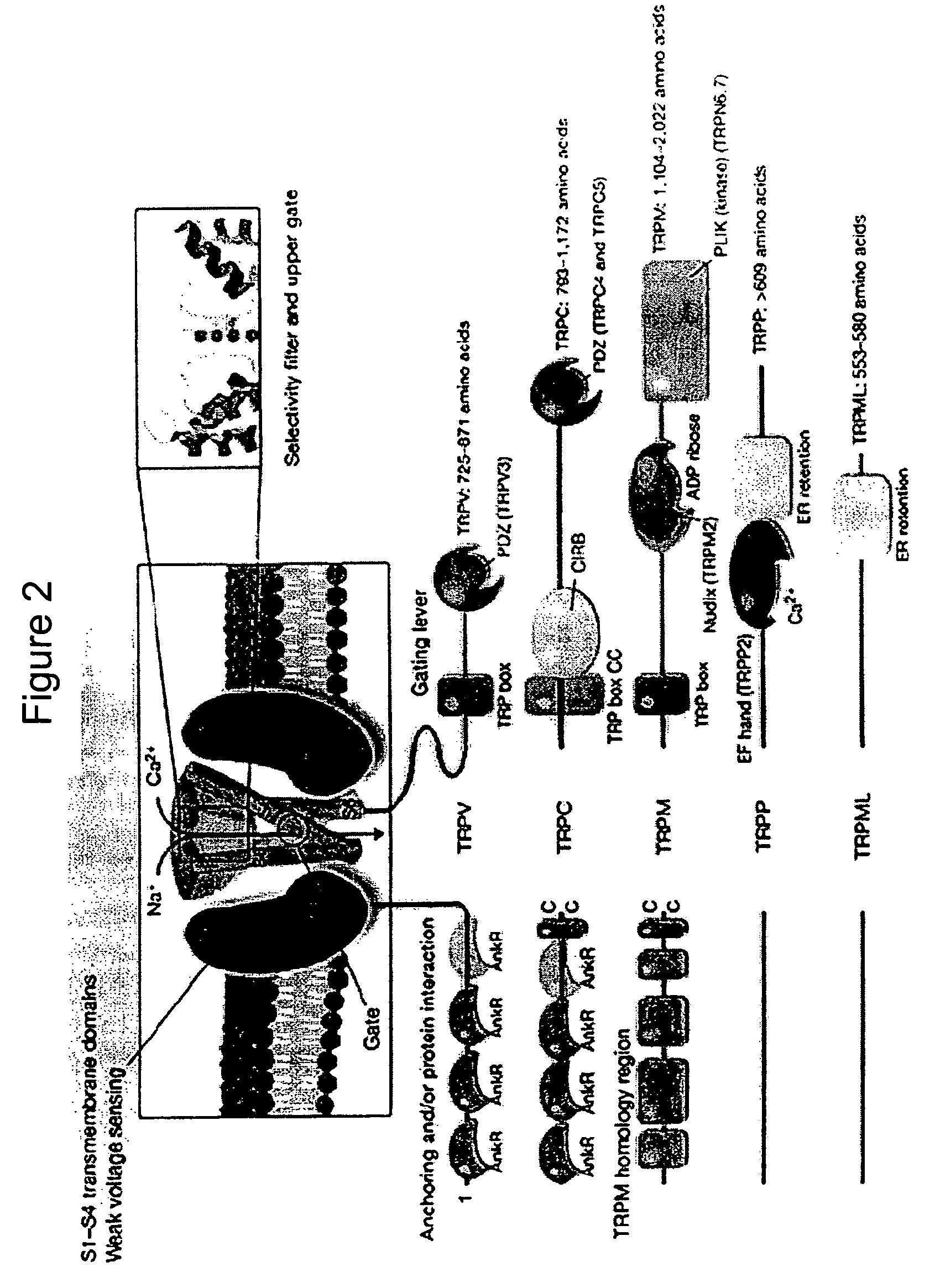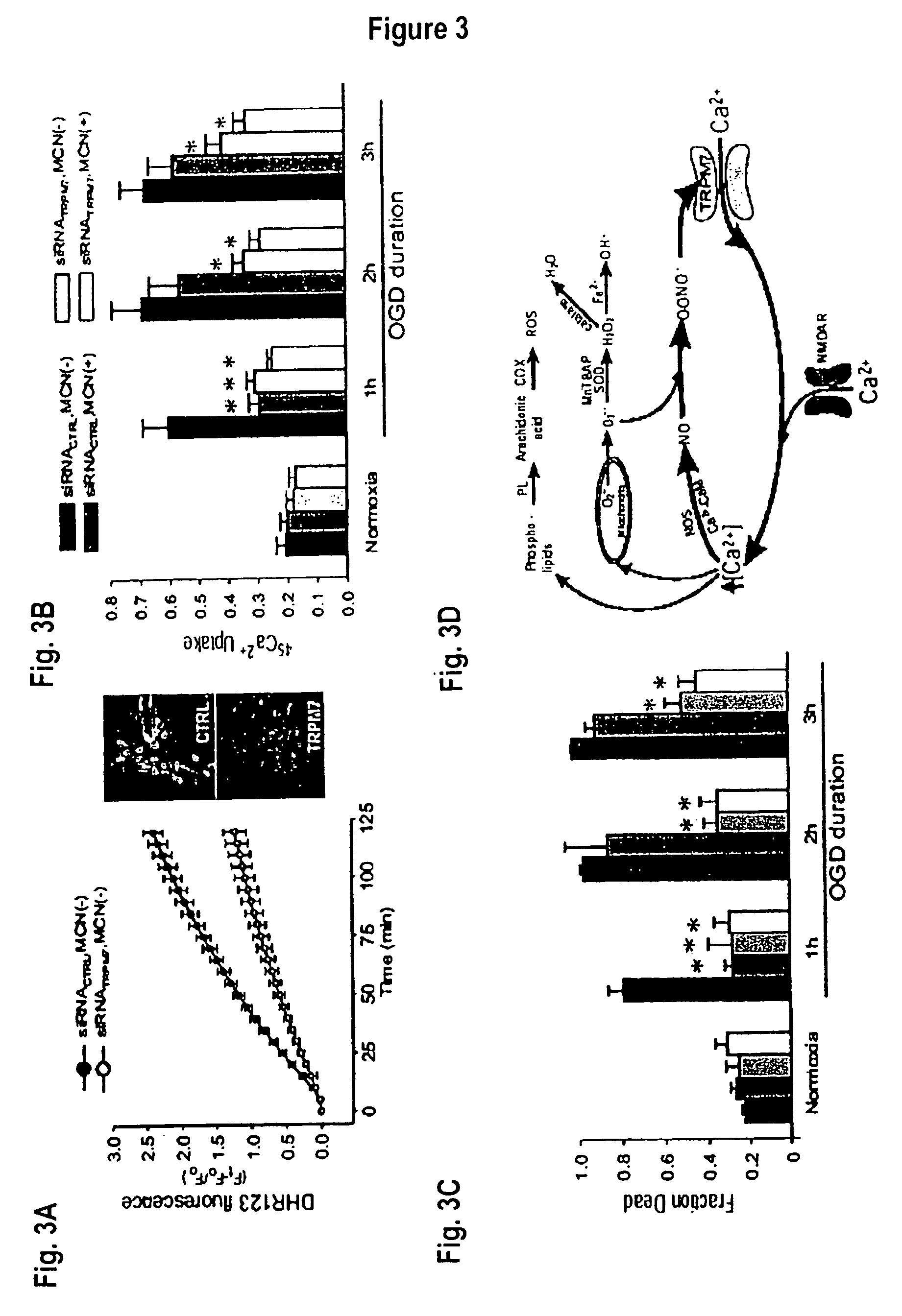Method of determining inhibition of binding to TRPM7 protein
a trpm7 protein and inhibition technology, applied in the field of determining the inhibition of binding to trpm7 protein, can solve the problems of affecting the treatment effect of aet, the clinical trial of anti-excitotoxic therapies (aet) has generally failed to benefit patients, and the blockage of nmda receptors may be detrimental to animals and humans. , to achieve the effect of reducing the activity of a trp cation channel
- Summary
- Abstract
- Description
- Claims
- Application Information
AI Technical Summary
Benefits of technology
Problems solved by technology
Method used
Image
Examples
example 1
Identification of TRPM7 Interactions with PDZ Domains
[0493]This example describes assays to identify binding between TRPM7 and PDZ domains. GST-PDZ fusions are produced that each contain an entire PDZ domain (or multiple PDZ domains), the collection encompassing approximately 90% of all PDZ domains identified in the human genome. (See Table 5 and Section V (PDZ Proteins and PL Protein Interactions Disclosure). Biotinylated peptide corresponding to 11 residues of Tat coupled to the C-terminal 9 amino acids of TRPM7 (YGRKKRRQRRRSTNSVRLML; SEQ ID NO:258) is synthesized and purified by HPLC.
[0494]Binding between these entities is detected through the G or the G3 Assays, calorimetric assays using avidin-HRP to bind the biotin and a peroxidase substrate.
[0495]Another type of assay is a fluorescence-based binding assay using the rhodamine derivative TAMRA (Molecular Probes) conjugated to the C-terminal 9 amino acids of TRPM7 (TAMRA-RRSTNSVRLML; SEQ ID NO:259).
[0496]A. G Assay for Identific...
example 2
Titration Experiments
[0571]The G3 assay was performed on a subset of the PDZ domains as in Example II except that the concentration of peptide was 0.002 μM, 002 μM, 0.1 μM, 0.2 μM, 1 μM, and 2 μM. Data was fitted to the equation:
y=100.0 / (1+10((log(m1)−log(m0))*m2)), where m1=EC50, m2=Hill coefficient, and m0=peptide concentration
[0572]to calculate the EC50 for the binding of the peptides to the PDZ domains.
[0573]Results:
[0574]EC50 data are presented in Table 9. Graphs of titrations for the biotinylated peptide representing 11 amino acids of Tat fused to the final 9 amino acids of TRPM7 (YGRKKRRQRRRSTNSVRLML; SEQ ID NO:258) peptide with RIM-2 d1, INADL d3, ZO-1 d2, and Par3 d3 are shown in FIGS. 9A, 9B, 9C, and 9D.
example 3
Peptide Binding
[0575]The G3 assay was performed to determine the binding of PDZ domains ZO-1 d2 and INADL d3 with the peptides listed in Table 10. EC50 results are shown in Table 10. FIGS. 10A and 10B show graphs of the titrations for the Peptide #1829 with ZO-1 d2 and for the Peptide #1839 with INADL d3.
[0576]The peptides shown in Table 11 have also been demonstrated to bind ZO-1 d2, INADL d3, PAR3 d3, syntrophin 1 alpha d1, and RIM2 d1 in G assays.
PUM
 Login to View More
Login to View More Abstract
Description
Claims
Application Information
 Login to View More
Login to View More - R&D
- Intellectual Property
- Life Sciences
- Materials
- Tech Scout
- Unparalleled Data Quality
- Higher Quality Content
- 60% Fewer Hallucinations
Browse by: Latest US Patents, China's latest patents, Technical Efficacy Thesaurus, Application Domain, Technology Topic, Popular Technical Reports.
© 2025 PatSnap. All rights reserved.Legal|Privacy policy|Modern Slavery Act Transparency Statement|Sitemap|About US| Contact US: help@patsnap.com



